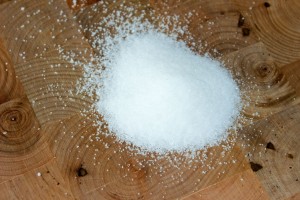6 Ways to Reduce Sugar in Your Children’s Diet

Ireland has shocking statistics in terms of obesity in children, with one in four children now overweight or obese. We are eating more and moving less and so too are our children. We need to provide children with healthy and varied diets to give them the tools necessary to become healthy adults. Our super-busy lifestyles, the ease of availability convenience foods, fussy children and the constant bombardment of advertising for packaged foods are all stumbling blocks in our battle to give our kids a healthy diet. Too much sugar has been linked to obesity in both adults and children. With Britain about to bring in a new sugar tax, it will be interesting to see how this will affect the sales of fizzy drinks and the overall health of the country as a whole. It definitely gets people talking and more aware of the effects of sugar if nothing else.
Even small changes now will help your children make more informed and sensible decisions later in life and good habits formed now will last into their adult lives.
Here are six practical ideas for reducing sugar in your child’s diet.
- Educate your children
Give your child an age appropriate responsibility for their own health. Explain how drinking water, exercising, eating fruit and vegetables and not having too much sugar is a good way to stay healthy. Speaking to them about this without overdoing it and making them overly conscious of what they’re eating is a good thing. I would definitely advise allowing treats sometimes, banning completely will cause your child to overdo it on a playdate or at a birthday party where treats are allowed. If your child’s school has a healthy eating policy, use it as a talking point with your child and discuss with them what they think is healthy and let them help plan what to have for their lunch.
- Cut Out the Sugary Drinks
Sugary drinks are a big culprit. Even a simple glass of fruit juice can contain up to 6 teaspoons of sugar. Cut out or cut down on fizzy drinks, juices and dilutables. These can contain several spoons of sugar and are a prime cause of tooth decay also.
- Be Prepared with the Healthy Snacks
Have some low sugar snacks on hand when out and about so you don’t cave in to the ‘I’m hungry’ and buy sweets or crisps as a stop gap for your child. Rice cakes plain or flavoured, fresh fruit, dried fruit, granola bars (check the sugar content), popcorn and home-made low sugar treats are all winners in my house. If you are baking with your child, learn to make some of the lower sugar recipes, there are plenty to be found online and more available daily as people are moving to reduce sugar in their diets. Some good examples are home-made brownies, sweets or cakes which don’t contain refined sugar. Although they are still sweet, they are much healthier.
- Watch for Hidden Sugar
Sugar resides in sweet drinks, biscuits, cake, sweets etc. but sugar is part of many other processed foods too, so make sure to check labels.
- Dessert doesn’t have to be everyday
If you have dessert for your children every day they will always expect it. Try to limit it to one day a week or special occasions. Encourage a yogurt or fruit for after dinner on other days.
- Don’t use Food Treats as a Reward
It can be tempting to reward children with a sweet or biscuit and they’re nearly guaranteed to do what you want them to. This can create an unhealthy relationship with food though and adding more sugar to your child’s diet.

| Top Tip
To find out the sugar content look at the Carbohydrates – of which sugars on packaging and if there is less than 5g of sugar per 100g then it is considered low sugar. If there is more than 20g sugar per 100g it is high in sugar. |
Have you any tips for reducing your family’s sugar consumption? I would love to hear about them!



A great post, thanks, clear and simple with lots of great advice.
Thanks Naomi :)